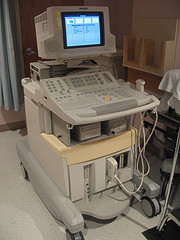What are Fibroids?
Fibroids are benign (meaning non-cancerous) growths that are found in the uterus. They are one of the most common tumors found in women during their child-bearing years. African American women and women over 30 years of age are more likely then other populations to develop fibroids, though any woman with a uterus is at risk.
Fibroids are classified according to the location ““ layer of tissue ““ where they are found.

- Myometrial fibroids are found in the thick, muscular layer, known as the myometrium
- Submucosal fibroids are found just under the mucosal layer of the uterus. This is the internal tissue laying just over the uterine lining (the endometrium)
- Subserosal fibroids are found just under the serosa, which is the thin outer layer of the uterus.
- Pedunculated fibroids are fibroids that grow on a stalk either inside or outside of the uterus. These growths may cause the stalk to twist, causing severe pain or other complications.
They can range in size from miniscule to large growths that can actually change the shape of the uterus. It is possible to have only one growth, but many women have multiple fibroids throughout the uterus.
The most common symptoms of uterine fibroids include heavy or prolonged periods, pelvic pain, difficulty with frequent or inadequate urination, back pain, or constipation.
Fibroids and Pregnancy
In most cases, fibroids and pregnancy don’t require any special management, especially if they are small and in a location that will not interfere with the pregnancy. Fibroids can cause some abdominal or pelvic discomfort during pregnancy especially during the first and second trimesters, which can usually be managed by acetaminophen (Tylenol). Of course, you should check with your doctor if you are having any unusual pain or cramping, as it can be a sign of something more serious.
Fibroids can, however, interfere with your ability to get pregnant. If the growth blocks one or both of the fallopian tubes, it will prevent sperm cells from reaching the released egg. The fibroid can also block the cervix, keeping the sperm from even reaching the uterus. It is also possible that, if the fibroid is large enough, it may block implantation of an embryo from occurring. In these cases, surgical removal may be necessary to increase your chances of conception.
Most of the time, uterine fibroids and pregnancy loss are not related. However, if you have had multiple losses, your doctor may recommend removing the fibroid to see if that improves your ability to carry a pregnancy to term.
Complications of Fibroids and Pregnancy